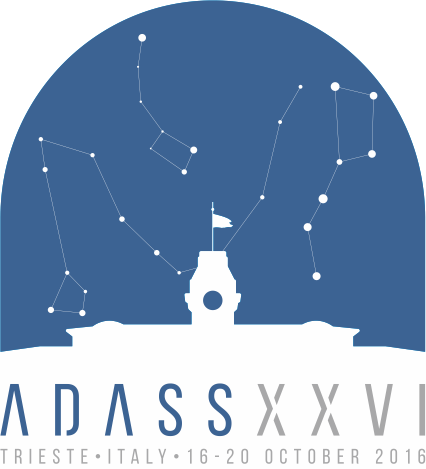Akhlaghi Mohammad
Contact
- Position:
- CRAL, Observatoire de Lyon, Lyon, France
- Address
- France
Miscellaneous Information
- Miscellaneous Information
-
Abstract Reference: 30309
Identifier: O8.1
Presentation: Oral communication
Key Theme: 1 Reduction and Analysis Algorithms for Large Databases and Vice-versa
Separating detection and catalog production: a step towards Algorithms for Large Databases and Vice-versaAuthors:
Akhlaghi MohammadDetection is defined as the process of separating (in an image, the pixels of) signal from noise. These labeled pixels are analyzed with the original data to reduce the data to higher level products (a catalog), e.g. the light weighted center of the object, or its magnitude. However, the signal from astronomical targets (for example galaxies, nebulae, stars or the PSF, comets, and etc) sinks into the noise very gradually, making raw (non-parametric) detection very hard. To dig into the noise, astronomers have traditionally used modelling of the regions above a given flux threshold (for example the Kron radius in galaxy photometry). Thus the clear distinction mentioned above between detection and catalog production was not possible for astronomical targets, hence catalog production is viewed as computationally expensive, thus decreasing scientific creativity.
In the 25th ADASS, we introduced a new method to detect extremely faint and diffuse signal with thresholds that are significantly below the Sky value (see Akhlaghi and Ichikawa 2015, ApJS 220, 1. arXiv:1505.01664). It is thus now possible to do detection accurately without any high-level calculation/assumption. Hence the ultimate goal of separating the detection from catalog production is now possible in astronomy for the first time. This methodology is applied in the GNU Astronomy Utilities: one utility (NoiseChisel) is in charge of detection, while another (MakeCatalog) uses those labeled images to generate a catalog. Having separated these two steps, users can run the expensive detection process once, and be very creative in catalog production with a much lower computational cost. This was the main idea behind the suggested "Reduction and Analysis Algorithms for Large Databases and Vice-versa" theme which was voted as the most important theme by the ADASS members. MakeCatalog will soon allow users to define a function at run time which will allow data base users even more creativity. Instead of only uploading coordinates, users of large data bases can now upload labeled images (that can be highly compressed) with WCS information and even define their own functions for what to do with the pixel positions and fluxes to generate as a catalog. These labeled images can be created/downloaded from other independent databases and warped. The databases can also efficiently keep labeled images of multiple detection configurations for the users to choose from.



